Amazing Images of Today’s Solar Eclipse from Earth and Space
Want to stay on top of all the space news? Follow @universetoday on Twitter
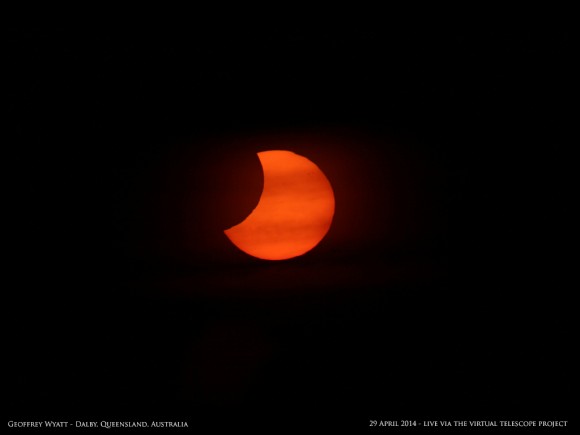
A fine partial solar eclipse seen though high clouds from Queensland. Credit: Geoffrey Wyatt/The Virtual Telescope Project.
The images are pouring in. While most of North America slept this AM, Australians were treated to the very first solar eclipse of 2014 earlier today. And while this particular eclipse was a partial one only from the Australian continent, it still offered observers a fine view of an often elusive natural spectacle.
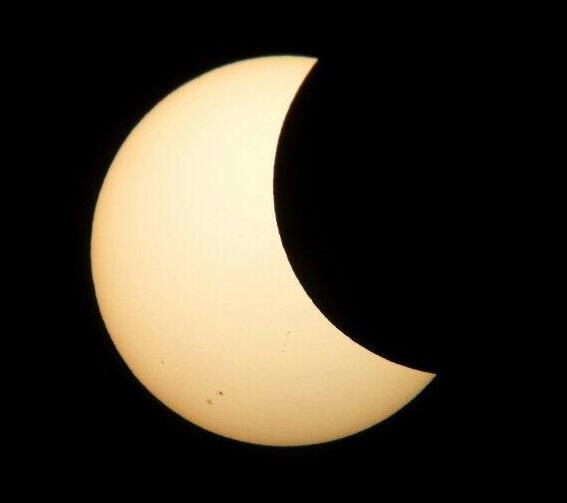
The partial eclipse as seen from Adelaide. Credit: Michael Drew (@MichaelDrew1234)
Although rain and clouds frustrated attempts to view the eclipse from much of southern Australia, clouds parted long enough in Queensland to the east and areas around Perth to the west to offer observers a fine view. Many eclipse watchers on the Australian east coast had the additional bonus of catching the setting Sun during the eclipse.
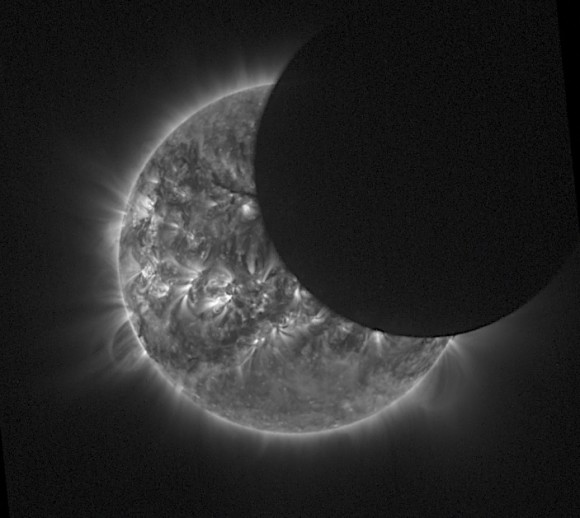
A quick screen shot from ESA’s Proba-2 spacecraft during one of the three passes of the solar eclipse. Credit: ESA/Proba-2.
We wrote about the prospects for catching this bizarre eclipse previously. The eclipse was a rare, non-central annular with one limit only, meaning the antumbra or inner core of the Moon’s shadow just grazed the edge of the planet over Antarctica. We haven’t yet heard if anyone witnessed it from the southern polar continent, though two year round research stations were located near the path of annularity. The European Space Agency operates Concordia Station nearby as part of its Human Spaceflight Activities program and they were aware of the upcoming event. We’ll keep you updated if reports or images surface!
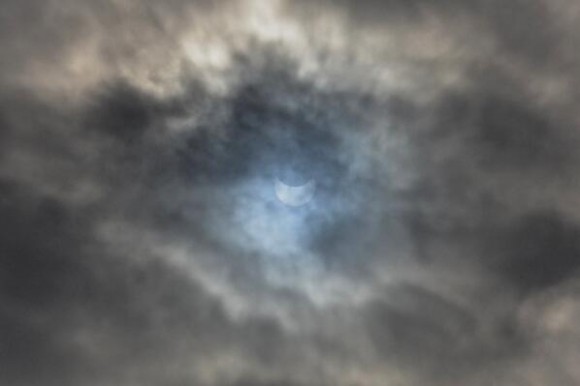
The eclipse seen through clouds. Photographer David Herne also noted that while he used his D3100 DSLR for the shot, his homemade pinhole camera offered fine views as well! Credit: David Herne(@AunaEridu)/Perth Western Australia.
As predicted, another solar observing sentinel in low Earth orbit did indeed witness the eclipse. ESA’s Proba-2 spacecraft caught the eclipse on three passes in this amazing raw animation from its SWAP-2 camera. The final third pass goes by extremely quick –these are measured in minutes from Proba-2’s swift vantage point – but the Sun looks well nigh to greater than 95% eclipsed by the Moon as it flies by.

The partial solar eclipse as seen from Adelaide, Australia. Credit: Silveryway.
There’s no word as of yet if the joint NASA/JAXA mission Hinode caught the eclipse as well, but we’ll keep you posted!
This eclipse is one of two solar eclipses and four eclipses total for 2014. An interesting discussion occurred leading up to this eclipse as to the minimum number of eclipses that can occur in a year, which is four. If, however, you exclude faint lunar penumbrals, that number does indeed drop to two, both of which must be solar, which occurs in 2016. This also sparked a lively debate as to the naming of such a year on Twitter, with everything from a “Dwarf Eclipse Year” to “Nano Eclipse Cycle” and “Spurious Eclipse Year” being proposed. We liked the suitably esoteric and ready tweet-able term “declipsy” ourselves… thanks for the proposals and the lively discussion!
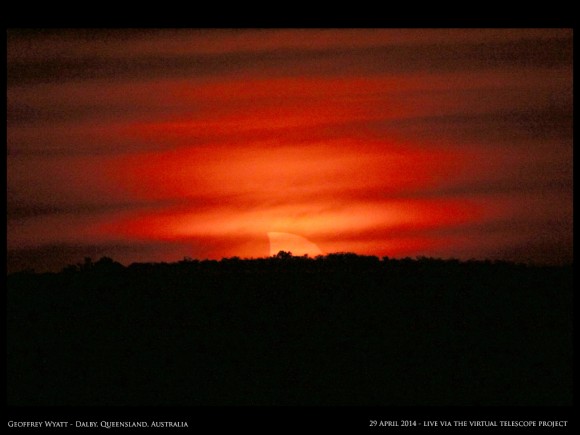
Cue Jaws music… a “shark fin” sunset eclipse. Credit: Geoffrey Wyatt/The Virtual Telescope Project.
Thanks also to all who sent in pics. We’ll be updating this post as more come in… and although eclipse season 1 of 2 may be over for now, 2014 still has another total lunar eclipse and a good partial solar in October, both visible from North America.
…And we’re only three years out and have just two more total solar eclipses to go until the historic total solar eclipse of August 21st, 2017…
Let the countdown begin!
UPDATE: Missed out on the solar eclipse today? Hey so did we, it happens to the best of us… luckily, YOU can now relive the all of the excitement of the eclipse courtesy of the folks from the Virtual Telescope Project in YouTube Splendor
Replies
Thank you so much for the pictures.
No problemo. I like the first one myself.